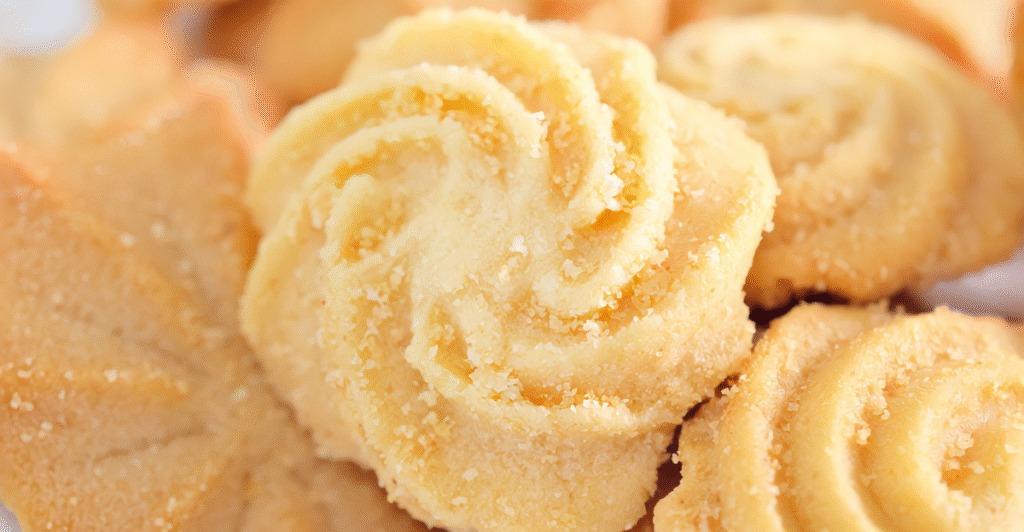
Baking has been made easy with the 3-ingredient butter, which debunks the misconception that baking is complicated because of its long ingredient lists and precise directions. With just flour, sugar, and butter, these cookies have a rich, buttery texture and require little work.
This recipe is surprisingly easy to make, accommodating the inexperienced in the kitchen, because it doesn’t call for eggs or leaveners. These cookies are a continual reminder that even the most basic things can become art pieces. Baking them becomes a rewarding, hands-on ritual in a society fixed on complexity. People are drawn in by their simplicity, which makes each batch feel connected and at ease.
1. Classic Danish Butter Cookies
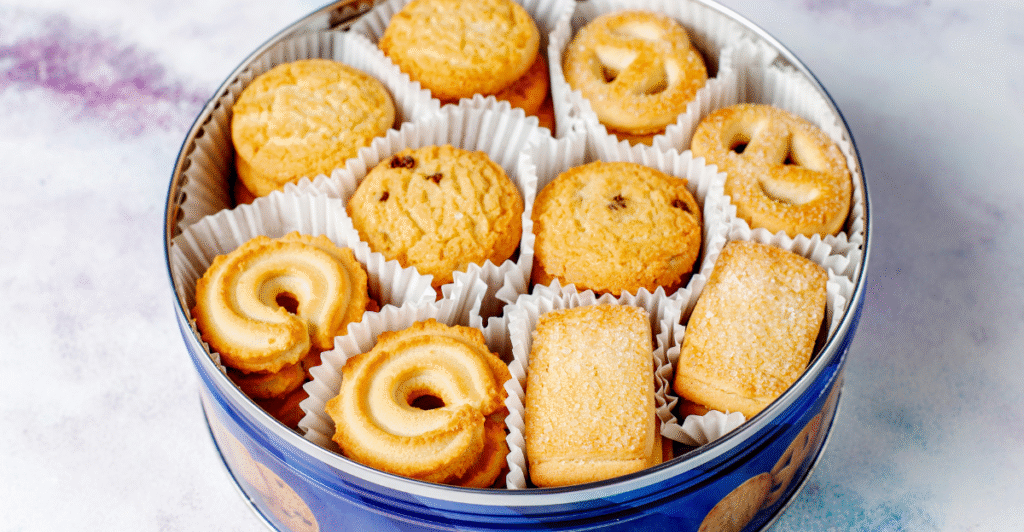
With only butter, flour, and powdered sugar, the traditional Danish butter cookie exemplifies minimalist baking. Baker’s cream softened butter with powdered sugar to aerate the dough and produce a light, fluffy base. After that, flour is added to create a soft, pliable dough that can be easily piped into swirls or beautiful shapes.
The cookies have a rich, buttery flavor that surpasses any store-bought version, and they bake up crisp but tender with golden edges. Because of their simplicity, they are ideal for gifts or holiday treats, demonstrating that anyone can become an expert baker using just three basic ingredients.
2. Thumbprint Butter Cookies
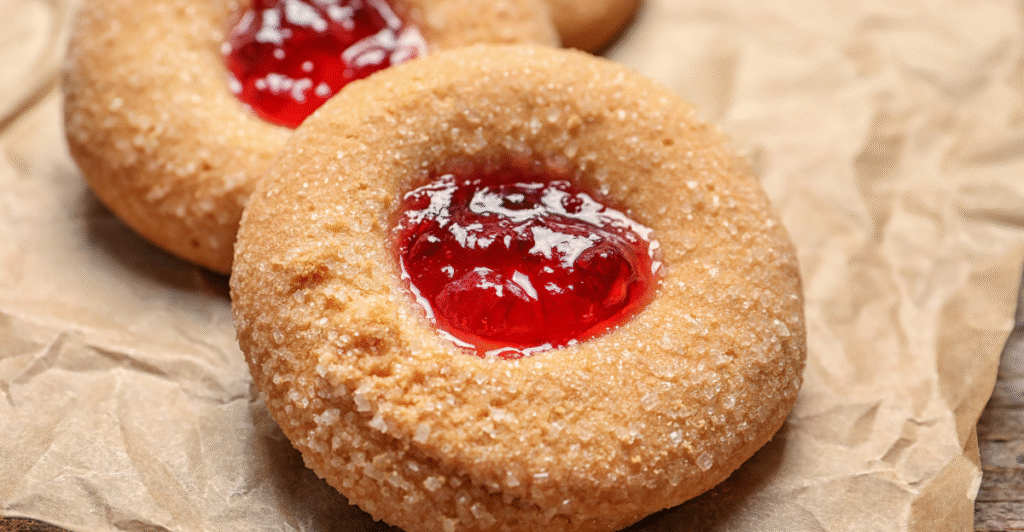
Made with only butter, flour, and powdered sugar, the traditional Danish butter cookie is a prime example of minimalist baking. The baker made softened butter with powdered sugar to aerate the dough and produce a light, fluffy base.
After adding flour, they create a soft dough ideal for piping into swirls or beautiful shapes. The cookies have a rich, buttery-like flavor that easily surpasses store-bought versions, a crisp yet tender texture, and golden edges as they bake. Because of their simplicity, these cookies are perfect for holiday treats or gifts, demonstrating that anyone can make delectable cookies using just three basic ingredients.
Both sweet and tart fillings go well with the buttery, crisp yet tender base. The version demonstrates the recipe’s versatility; you can easily get creative without adding extra steps. Both novice and seasoned bakers will enjoy making these cookies because they combine classic favorites with fresh concepts.
3. Shortbread Cookies
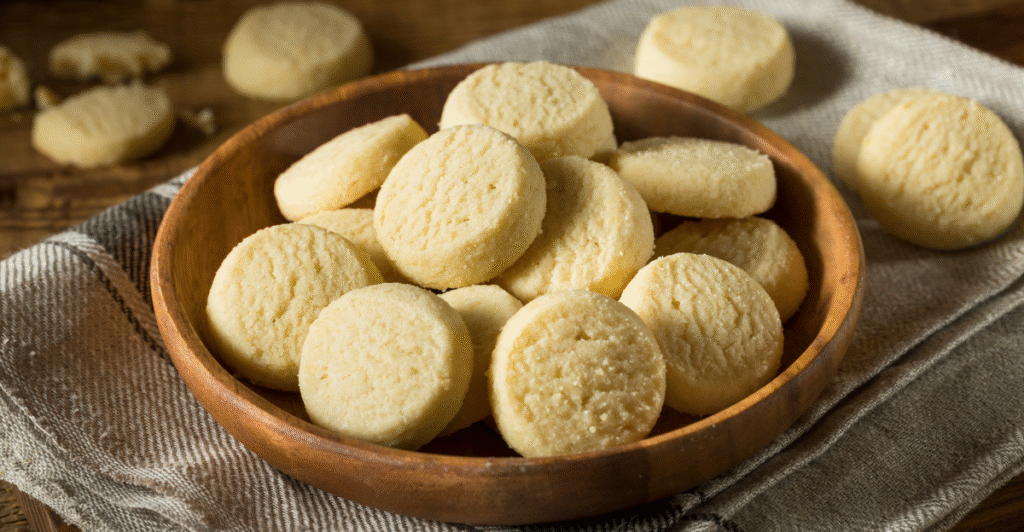
Traditionally made with flour, sugar, and butter, shortbread embodies buttery decadence and crumbly texture. To ensure a tender bite, it’s essential to use cold butter and little mixing to avoid gluten formation. Because there are no eggs or leaveners, there are fewer variables to manage, making this recipe so forgiving.
The buttery richness of shortbread melts on the tongue when it is pressed into a pan or rolled and cut into shapes. Its cultural significance as a straightforward, ageless treat that anyone can master is highlighted by its historical roots in Scottish baking.
How Baking Simple Cookies Boosts Mental Health
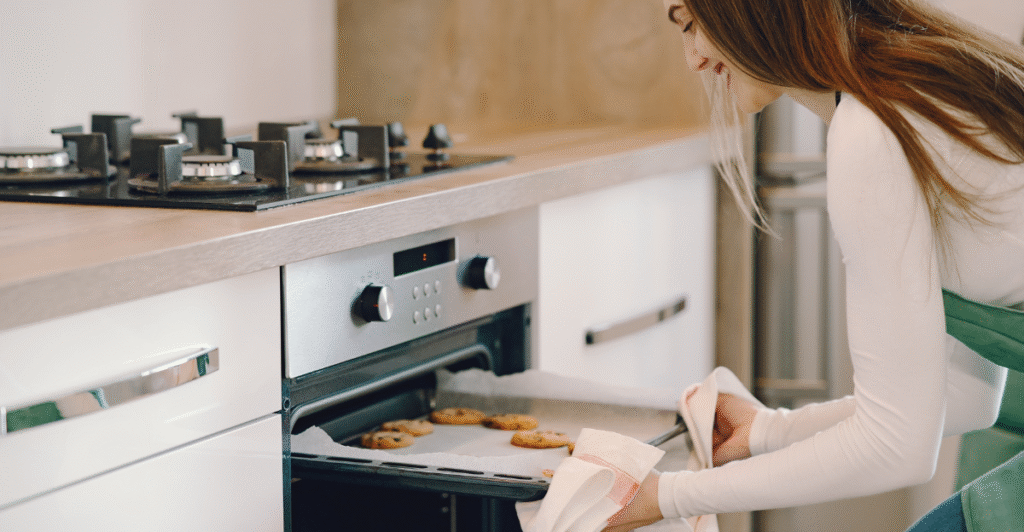
There is a neurological reason why we are attracted to recipes that require only three ingredients. When we successfully produce something delicious with little effort, our brains release dopamine, the same reward chemical triggered by cookies’ high-fat content.
Therefore, it creates the pleasure of producing and consuming, resulting in a double satisfaction loop. Easy recipes also lessen the mental effort needed to finish a task, or “cognitive load,” as psychologists refer to it.
The simplicity of three ingredients provides a welcome psychological break in a time of perpetual decision fatigue and information overload. Additionally, because butter cookies are for coziness, holidays, and family customs, they are emotional triggers that bring back memories of easier times. Because of this psychological comfort, minimalist
From Royal Kitchens to Global Phenomenon
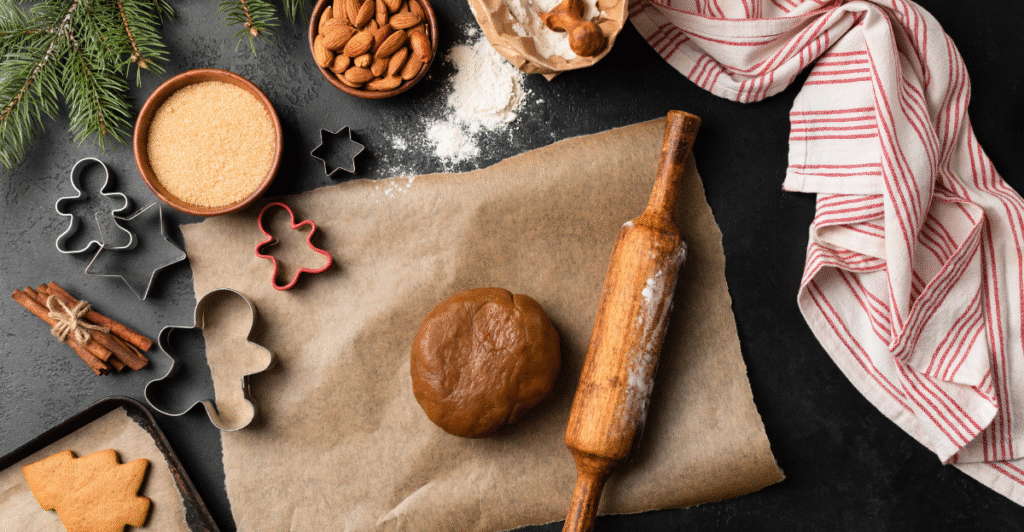
The butter cookie’s elegant simplicity belies its aristocratic origins. While the exact genesis remains unclear, high-fat-ratio Danish butter cookies have been recorded since the late nineteenth century.
Denmark became a leading exporter to America and Asia thanks to its natural advantage—exceptional dairy production, which produced the ideal conditions for butter cookie perfection. During the holidays, people frequently share these cookies in ornamental tins, using them as delicious treats and cultural and friendly symbols.
The straightforward recipe has remained the same for over a century, demonstrating the enduring appeal of straightforward, hassle-free baking. What started as a demonstration of superior butter quality in European royal kitchens has become a comfort food enjoyed worldwide, demonstrating that sometimes culinary evolution involves returning to the basics rather than introducing complexity.
Breaking Down Baking Barriers
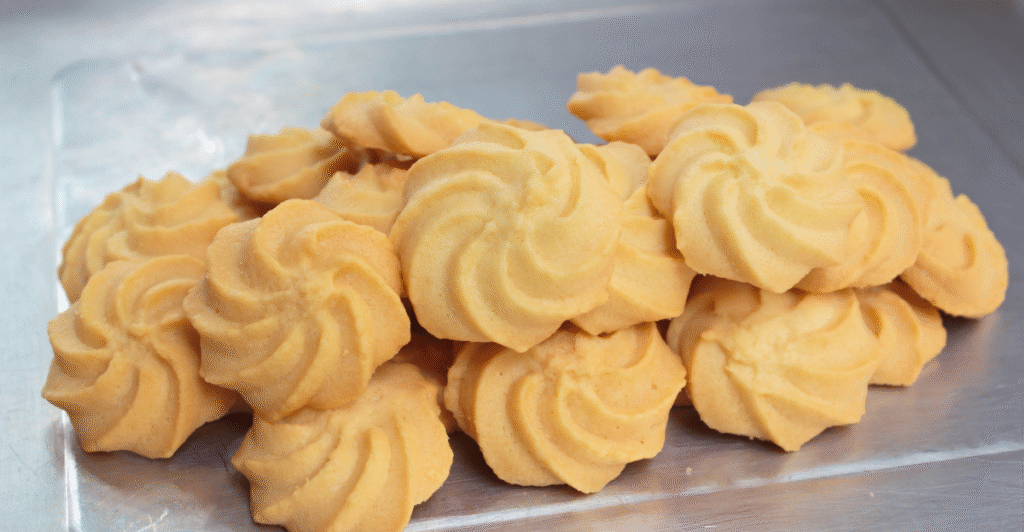
True culinary democracy is seen in the three-ingredient butter cookies, accessible to people with almost any barrier that usually restricts cooking participation. They use common ingredients found in many kitchens and require little financial outlay. Because they require little strength or dexterity, they are good choices for kids, senior bakers, and people with physical limitations.
Time constraints, the biggest challenge facing modern cooks, are also addressed; preparation takes less than 15 minutes. Plant-based butter or gluten-free flour can be used to nutritionally modify these cookies to accommodate dietary restrictions without altering the basic method. These cookies are accessible to practically anyone with access to the internet, which explains why they go beyond popular recipe trends.
Why Three Ingredients Work Magic Together
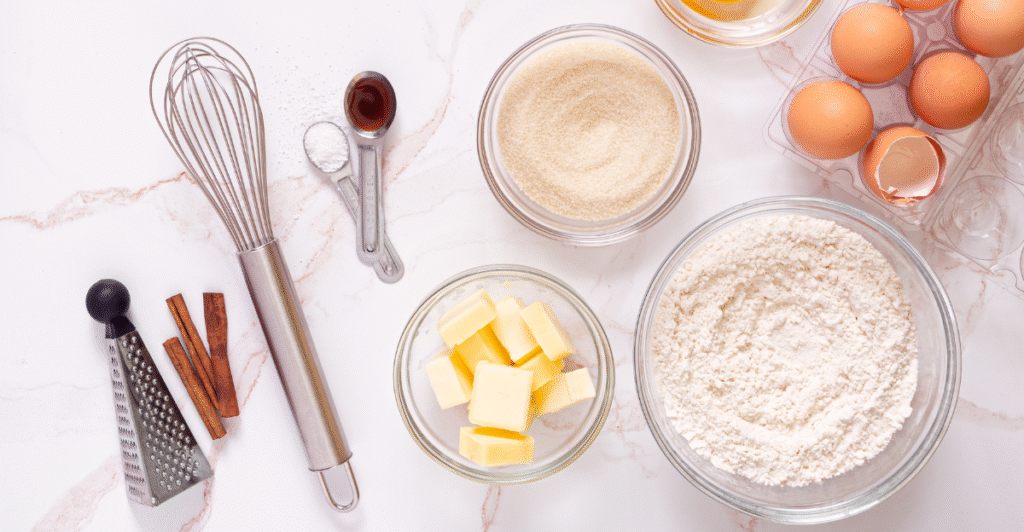
The chemistry behind 3-ingredient butter cookies reveals how this minimalist approach leverages fundamental food science principles. Butter performs three functions: milk solids that aid in flavor development through Maillard reactions, moisture that produces steam during baking for proper structure, and fat that gives food tenderness.
Cornstarch, an ingredient in powdered sugar, keeps cookies soft and prevents excessive gluten formation, which could make them tough. The flour provides the structure because no eggs are used to hold everything together. When the flour sets, it creates tiny air pockets, the sugar caramelizes slightly, and the butter melts when baked at 350°F (177°C).
When baked at 350°F (177°C), the sugar lightly caramelizes and the butter melts. The heat and simple ingredients combine to make tasty cookies without needing anything extra.
Brilliant Twists That Keep It Simple
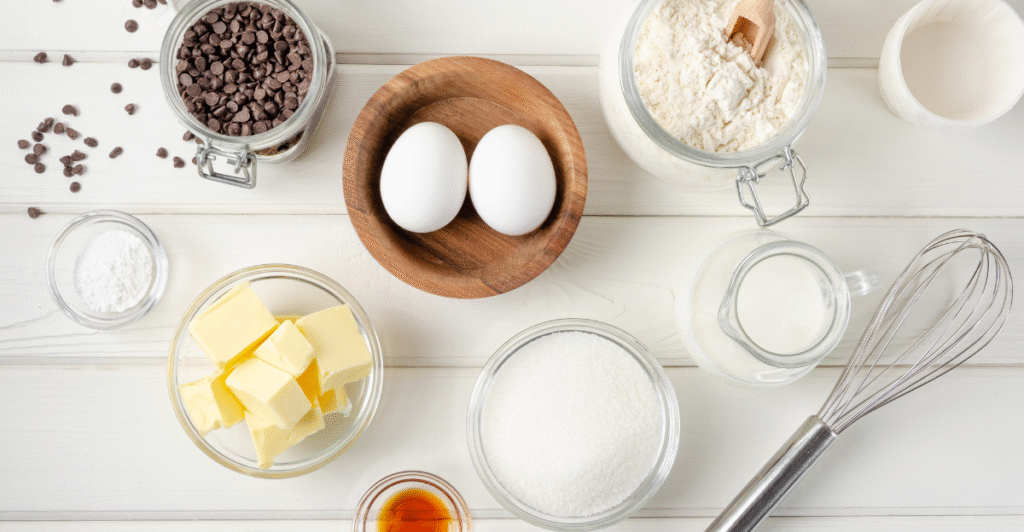
This 3-ingredient recipe is super flexible and still easy to make. Bakers can create many versions by changing one ingredient and following simple steps.
For chocolate butter cookies, use cocoa powder instead of a quarter cup of flour. Add a little citrus zest for brightness without complexity. Use ground spices like nutmeg, cinnamon, or cardamom to evoke various cultural traditions.
When piped into rosettes or pressed flat, the same dough produces completely different textural experiences, so even the shape changes the experience. Sandwich cookies with jam inside, thumbprints with chocolate inside, or edges dipped in chocolate and sprinkles are examples of form adaptations.
Why Less Will Always Be More
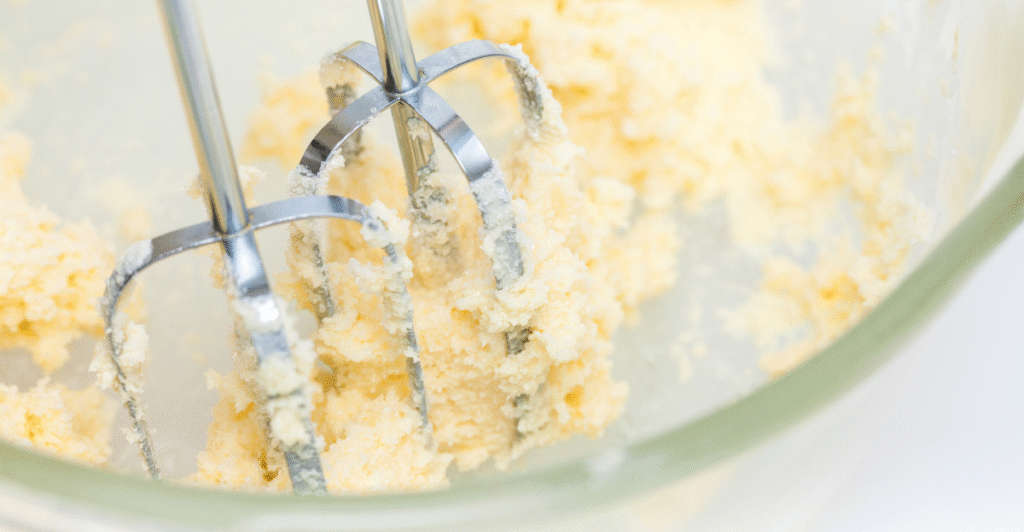
A prime example of why culinary minimalism is timeless across generations and trends is the three-ingredient butter cookie. When each ingredient fulfills distinct, multipurpose functions, the outcome is not deprivation but refinement—the culinary equivalent of a well-crafted sentence.
These cookies blend into today’s digital sharing culture while tying us to centuries of tradition. They show that accessibility must not equate to excellence; limitations sometimes encourage creativity. The psychological appeal of baking something amazing with just three ingredients provides a way to practice mindfulness as our lives become more complicated.
